Sudoku Online
Welcome to Sudoku Online, your digital playground for logic, focus, and mental clarity. Dive into the timeless puzzle that has captivated minds for generations—now optimized for modern screens. Whether you’re solving classic 9×9 grids or exploring clever variants like Killer Sudoku and Hyper Sudoku, this site offers free, intuitive gameplay for all skill levels. With helpful features like hints, notes, and difficulty settings, Sudoku Online makes it easy to learn, improve, and master the art of deduction. No downloads, no distractions—just pure puzzle-solving satisfaction, anytime you need a mental boost.
Play Other Games
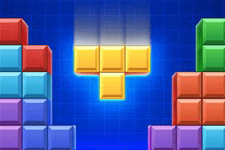
Block Blast
Place blocks, clear rows, and score points!
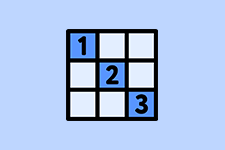
Sudoku
Solve a 9×9 Sudoku grid

Numberle
Math game like Wordle
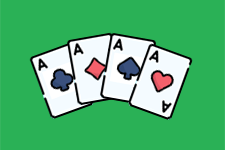
Solitaire
Play Classic Solitaire

Watermelon Game
Merge fruits in a box

Snake game
Play Google 🐍 Snake
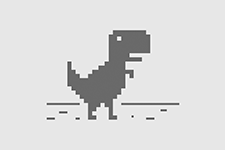
Dinosaur game
Play Google 🦕 Dinosaur

Flappy Bird
Classic Flappy bird game
Sudoku Online – Free, Instant Play & No Download Required
Welcome to your new favorite place for a mental workout. Here, you can play Sudoku online completely free, with zero ads or downloads to interrupt your focus. We’ve designed a calm, clean interface so you can instantly dive into a classic puzzle that sharpens your mind and soothes your spirit. Playing Sudoku is a perfect way to improve concentration, boost memory, and enjoy a moment of peaceful relaxation. Ready to solve? Start playing instantly and discover the simple joy of this timeless logic game.

A clean, minimalist Sudoku online board in a mid-solved state, with crisp black numbers on a white background. The board is slightly angled, showing a calm and focused gameplay experience. | Alt Text: A partially completed Sudoku puzzle board, ready for a player to solve.
What Is Sudoku and Why People Love It
Sudoku online is more than just a numbers game; it’s a journey of logic, patience, and discovery. This classic puzzle has captured the hearts of millions worldwide, offering a unique blend of challenge and relaxation. It doesn’t require complex math, only pure logic and pattern recognition, making it accessible to everyone. People love it for the quiet satisfaction of finding the right number, the mental clarity it brings, and the simple, screen-based escape it provides from a busy day. It’s a timeless brain teaser that continues to thrive in the digital age.
The Origin of Sudoku
Though strongly associated with Japan, Sudoku’s roots trace back to an American puzzle creator. An architect named Howard Garns first published it in 1979 under the name “Number Place.” The puzzle found its way to Japan, where the publisher Nikoli began featuring it in their magazines. They renamed it “Sudoku,” which translates to “single number.” From there, its popularity exploded, spreading globally and becoming a staple in newspapers, books, and eventually, online platforms. Its foundation lies in classic logic games and mathematical puzzles, but its elegant simplicity is what made it a worldwide phenomenon.
The Purpose and Benefits of Playing Sudoku
Playing Sudoku online is a powerful exercise for your brain, offering a wide range of cognitive and emotional benefits. It’s a fun way to engage your mind and build healthy mental habits. Think of it as meditation for your logical brain, providing a structured way to focus and de-stress.
- Improves Concentration: The game requires you to focus intently, training your ability to pay attention to detail and avoid distractions.
- Enhances Memory: You constantly have to remember which numbers are in which rows, columns, and boxes, giving your short-term memory a great workout.
- Reduces Stress and Anxiety: The act of solving a puzzle can be incredibly calming. By immersing yourself in the logical flow of Sudoku, you can enter a mindful state that eases daily pressures.
- Promotes Logical Thinking: Sudoku is all about logic. It teaches you to think methodically, test hypotheses, and use elimination to find solutions—skills that are valuable in everyday life.
- Provides a Sense of Accomplishment: Finishing a puzzle, no matter the difficulty, delivers a satisfying feeling of achievement and boosts your confidence.
How to Play Sudoku — Step-by-Step Beginner’s Guide
Learning Sudoku online is easier than you think. The game is based on a simple set of rules and pure logic. Once you understand the fundamentals, you’ll be on your way to solving puzzles and enjoying the mental challenge. This guide will walk you through everything you need to know, from the grid structure to basic solving techniques.
Understanding the Sudoku Grid
The Sudoku puzzle is presented on a 9×9 grid. This large grid is further divided into nine smaller 3×3 subgrids, often called “boxes” or “regions.” The entire puzzle is made up of three key components:
- Rows: The nine horizontal lines of squares.
- Columns: The nine vertical lines of squares.
- Boxes: The nine 3×3 subgrids.
The goal is to fill the empty squares with numbers from 1 to 9, following the rules. The grid starts with some numbers already filled in; these are your “given clues” to help you get started. The symmetry and pattern of the grid are central to solving the puzzle.
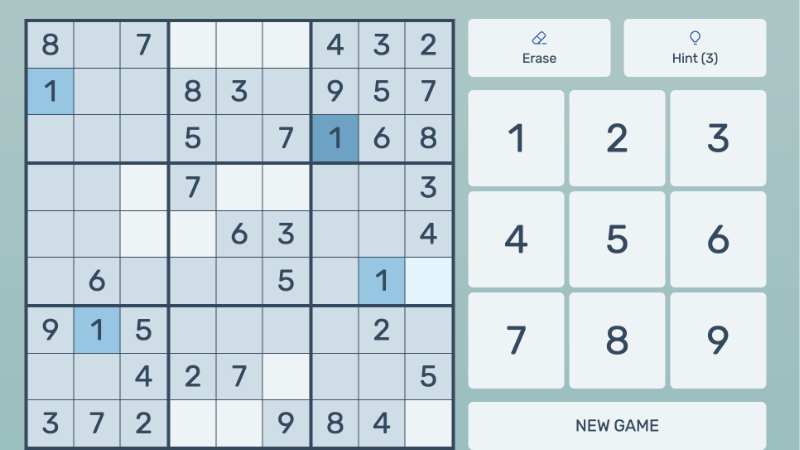
A diagram of a 9×9 Sudoku grid. One row, one column, and one 3×3 box are highlighted in different colors (e.g., blue for the row, green for the column, yellow for the box) with clear labels pointing to each. | Alt Text: A diagram explaining the structure of a Sudoku grid, showing rows, columns, and 3×3 boxes.
Sudoku Rules Explained Simply
The beauty of Sudoku online lies in its simple rules. There is only one core principle you need to remember, which applies to all three grid components.
- Rule 1: Every row must contain the numbers 1 through 9, with no repetitions.
- Rule 2: Every column must contain the numbers 1 through 9, with no repetitions.
- Rule 3: Every 3×3 box must contain the numbers 1 through 9, with no repetitions.
In other words, a number can only appear once in any given row, column, or box. The numbers you start with, called “givens,” cannot be changed. Your task is to use logic to fill in the rest of the grid according to these rules. There is no math involved—only deduction.
Sudoku Solving Techniques for Beginners
When you first start, it’s helpful to have a few basic strategies. These techniques will help you find numbers logically instead of guessing.
Scanning:
- Pick a number (e.g., 5) and scan all nine 3×3 boxes. See which boxes are missing a 5.
- In a box that needs a 5, look at the rows and columns that pass through it. If a row or column already has a 5, you can eliminate the squares in that box that fall on that line.
- Sometimes, this process will leave only one possible empty square in a box for your chosen number.
Cross-Hatching:
- This is a more focused version of scanning. Choose an empty square you want to fill.
- Look at its corresponding row, column, and 3×3 box.
- List all the numbers that are already present in that row, column, and box.
- The number that is not on your list is the one that can potentially go in the empty square. If you narrow it down to a single number, you’ve found your answer.
Pencil Marks:
- If you can’t find a definite number for a square, use “pencil marks” to note down all the possible candidates.
- As you fill in other numbers on the grid, you can go back and erase candidates from your pencil marks, eventually leaving you with only one option for a square.
Beginner’s Tip: Try this next time you get stuck. Focus on a row, column, or box that is almost full. It’s often easier to figure out the one or two missing numbers there than to start with a mostly empty section.
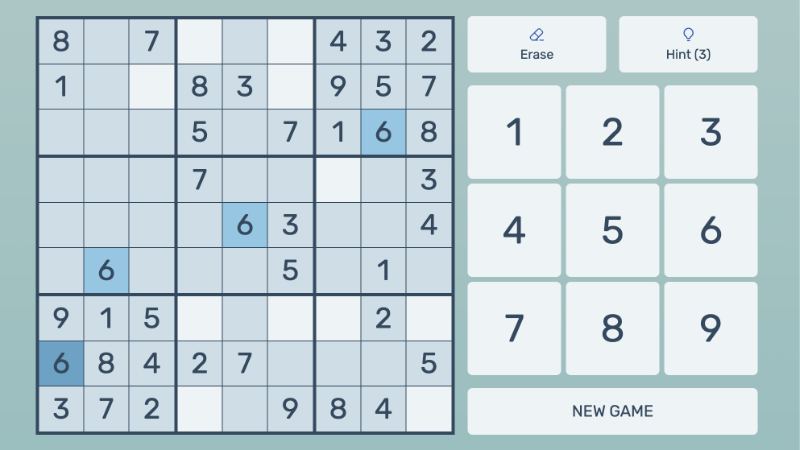
Play Sudoku Online Now
Ready to put your knowledge into practice? Our online Sudoku online is designed for a seamless and enjoyable experience. Choose your challenge, use helpful features, and track your progress as you become a more confident solver.
Choose Your Difficulty
We offer puzzles for every skill level. Start with Easy to build your confidence and work your way up to Expert for the ultimate logical test.
| Level | Who It’s For | Key Benefit |
|---|---|---|
| Easy | Beginners | Learn the rules and build confidence. |
| Medium | Casual players | Enjoy a balanced and satisfying challenge. |
| Hard | Experienced solvers | Sharpen focus and train your memory. |
| Expert | Puzzle masters | Push your logical skills to the maximum. |
Game Features
Our game is equipped with features to support your puzzle-solving journey.
- Pencil Marks: Note down possible numbers in any square.
- Undo: Reverse a move if you make a mistake.
- Hints: Get a little help when you’re truly stuck.
- Timer: Track how long it takes you to solve each puzzle.
- Auto-Check: Instantly see if you’ve entered a wrong number.
- Themes: Choose between light and dark mode for comfortable viewing.
How to Track Your Progress
Your progress is automatically saved in your browser, so you can always pick up where you left off. The stats dashboard tracks your best times and completion streaks. Challenge yourself to play one puzzle a day and watch your skills grow!
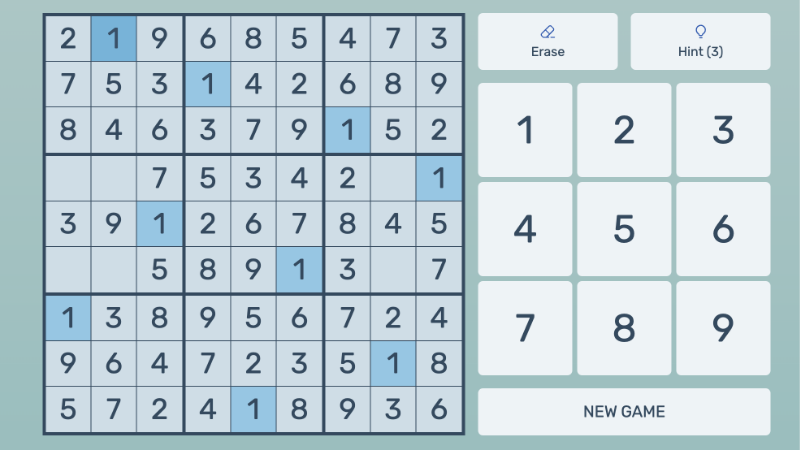
Sudoku online Tips and Strategies to Improve Faster
Once you’ve mastered the basics, you can explore more advanced strategies to solve harder puzzles and improve your speed. These techniques are all about recognizing patterns and using more complex logic to unlock the grid.
Expert Techniques Beyond the Basics
Advanced techniques help you solve puzzles where basic scanning isn’t enough. They focus on identifying relationships between cells and their candidates.
- Naked Pairs/Triples: If you find two cells in the same row, column, or box that have the exact same two pencil-marked candidates (e.g., both must be a 4 or 7), you can eliminate those two candidates from all other cells in that same row, column, or box. The same logic applies to three cells with the same three candidates (Naked Triples).
- Hidden Pairs/Triples: This is the inverse. If two candidates appear in only two cells within a row, column, or box, then those two cells must contain those two numbers, even if they have other candidates as well. You can then eliminate all other candidates from those two cells.
- X-Wing: A more complex technique that involves looking for the same candidate in four cells that form a rectangle across two rows and two columns. If the candidate can only go in the four corners of this rectangle, you can eliminate it from the rest of those columns.
- Swordfish: A similar but more advanced version of the X-Wing that involves three rows and three columns.
Common Mistakes to Avoid
As you learn, you might fall into a few common traps. Avoiding these will make you a more disciplined and accurate solver.
- Guessing: The number one rule of Sudoku online is to use logic, not luck. A single wrong guess can cascade and make the puzzle unsolvable. If you’re stuck, try a different technique instead of guessing.
- Forgetting to Scan: Don’t get so focused on one box that you forget to scan the whole grid. Sometimes the answer you need is on the opposite side of the puzzle.
- Overfilling with Pencil Marks: Too many pencil marks can make the grid confusing. Be strategic and only note candidates when you’ve narrowed them down to a few possibilities.
- Losing Patience: Harder puzzles take time. It’s okay to step away and come back with a fresh perspective.
Build Your Daily Sudoku online Routine
Consistency is the key to improvement. A small daily commitment can make a big difference in your logical thinking and speed.
- Set aside 10-15 minutes each day. This is enough time to complete an easy or medium puzzle.
- Start your day with a puzzle to warm up your brain, or wind down with one in the evening to relax.
- Track your solve times. Challenge yourself to beat your personal best, but don’t obsess over the timer. The main goal is to enjoy the process.
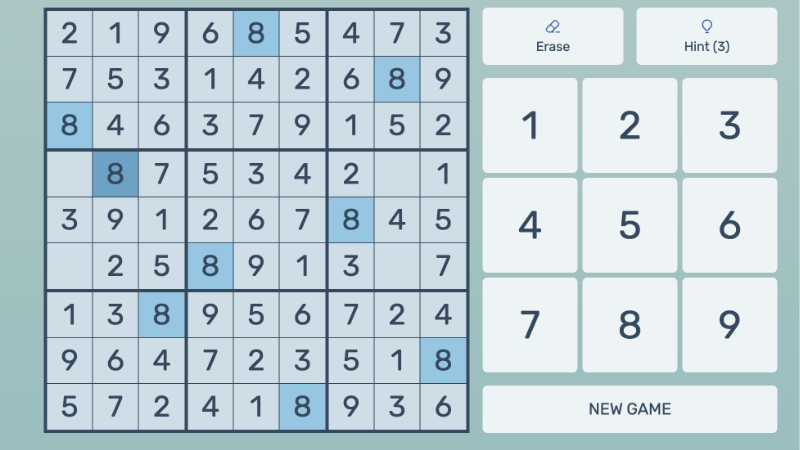
Printable & Mobile Sudoku online Options
Enjoy Sudoku online wherever you are. Whether you prefer the classic feel of pen and paper or the convenience of playing on your phone, we have you covered.
Play Anywhere
Our Sudoku online game is fully mobile-friendly, designed to work perfectly in any browser on your phone or tablet. The interface adapts to any screen size, giving you a smooth and responsive experience on the go. There’s no app to download, so you can start playing instantly. For those who love an offline challenge, we also offer a “Print Sudoku” option. Simply generate a puzzle, print it out, and enjoy solving it at your own pace.
Compare Sudoku Online vs. App Versions
Wondering whether to play in a browser or download a dedicated app? Here’s a quick comparison to help you decide.
| Feature | Online Version (Browser) | App Version (Downloaded) |
|---|---|---|
| Installation | No download needed, instant play | Requires download and uses phone storage |
| Ads | None on our site | Often contains intrusive ads |
| Speed | Loads instantly | Can lag or be slow to open |
| Accessibility | Play on any device with a browser | Limited to the device it’s installed on |
| Progress Sync | Saved locally in your browser | Syncs across devices (if supported) |
About Sudoku Online
We believe in the power of puzzles to bring calm, focus, and a little bit of joy to everyday life. Learn more about who we are and why we built this peaceful corner of the internet.
Who We Are
- We are a small team of puzzle enthusiasts and developers who love classic logic games. Our goal is to create simple, accessible, and ad-free digital experiences for fellow puzzle lovers. This site is run by people who genuinely play and appreciate the art of a well-designed Sudoku.
Why We Created Sudoku Online
- We created this site out of a desire for a straightforward, distraction-free Sudoku online. Many online versions are cluttered with ads, confusing features, and timers that create pressure. We wanted to build a place that honors the calm, meditative nature of the puzzle itself, inspired by the nostalgia of solving puzzles in a newspaper. Our puzzles are generated by a carefully designed algorithm that ensures every single one is solvable with pure logic.
Contact & Support
- Have feedback or a question? We’d love to hear from you. Please visit our About Us or Contact pages for more information.

Learn More — Expand Your Mind with Logic Games
If you enjoy the logical challenge of Sudoku online, you might love other classic brain games. Each one offers a unique way to train your mind, improve your focus, and have fun. Continue your mental workout by exploring our other free-to-play puzzles.
- Chess: Master the ultimate game of strategy.
- Mahjong: Test your pattern-matching skills.
- Solitaire: Enjoy a timeless card game of patience.
- Wordle: Challenge your vocabulary with a daily word puzzle.
…more
Rate Sudoku Online:
4.8 / 54,760 votes
